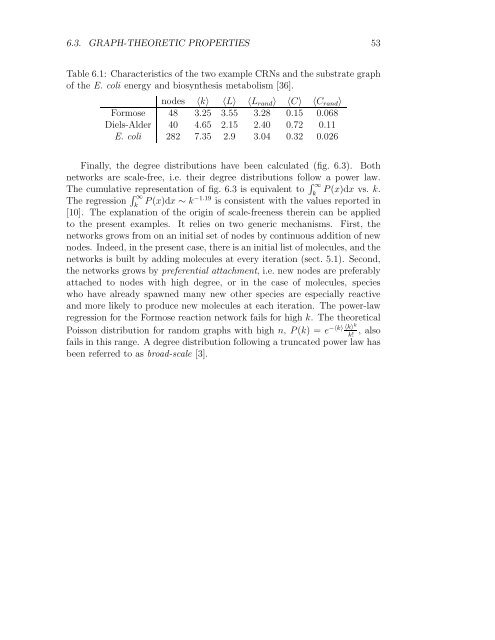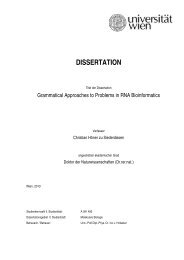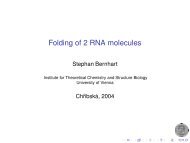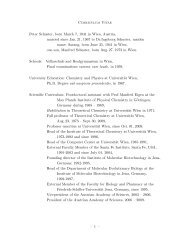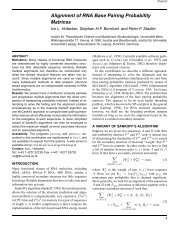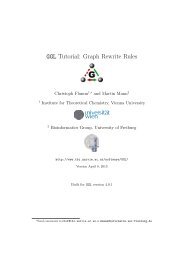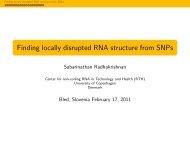A Toy Model of Chemical Reaction Networks - TBI - Universität Wien
A Toy Model of Chemical Reaction Networks - TBI - Universität Wien
A Toy Model of Chemical Reaction Networks - TBI - Universität Wien
You also want an ePaper? Increase the reach of your titles
YUMPU automatically turns print PDFs into web optimized ePapers that Google loves.
6.3. GRAPH-THEORETIC PROPERTIES 53<br />
Table 6.1: Characteristics <strong>of</strong> the two example CRNs and the substrate graph<br />
<strong>of</strong> the E. coli energy and biosynthesis metabolism [36].<br />
nodes 〈k〉 〈L〉 〈L rand 〉 〈C〉 〈C rand 〉<br />
Formose 48 3.25 3.55 3.28 0.15 0.068<br />
Diels-Alder 40 4.65 2.15 2.40 0.72 0.11<br />
E. coli 282 7.35 2.9 3.04 0.32 0.026<br />
Finally, the degree distributions have been calculated (fig. 6.3). Both<br />
networks are scale-free, i.e. their degree distributions follow a power law.<br />
The cumulative representation <strong>of</strong> fig. 6.3 is equivalent to ∫ ∞<br />
P(x)dx vs. k.<br />
k<br />
The regression ∫ ∞<br />
P(x)dx ∼ k<br />
k−1.19 is consistent with the values reported in<br />
[10]. The explanation <strong>of</strong> the origin <strong>of</strong> scale-freeness therein can be applied<br />
to the present examples. It relies on two generic mechanisms. First, the<br />
networks grows from on an initial set <strong>of</strong> nodes by continuous addition <strong>of</strong> new<br />
nodes. Indeed, in the present case, there is an initial list <strong>of</strong> molecules, and the<br />
networks is built by adding molecules at every iteration (sect. 5.1). Second,<br />
the networks grows by preferential attachment, i.e. new nodes are preferably<br />
attached to nodes with high degree, or in the case <strong>of</strong> molecules, species<br />
who have already spawned many new other species are especially reactive<br />
and more likely to produce new molecules at each iteration. The power-law<br />
regression for the Formose reaction network fails for high k. The theoretical<br />
Poisson distribution for random graphs with high n, P(k) = e −〈k〉 〈k〉 k<br />
, also<br />
k!<br />
fails in this range. A degree distribution following a truncated power law has<br />
been referred to as broad-scale [3].


